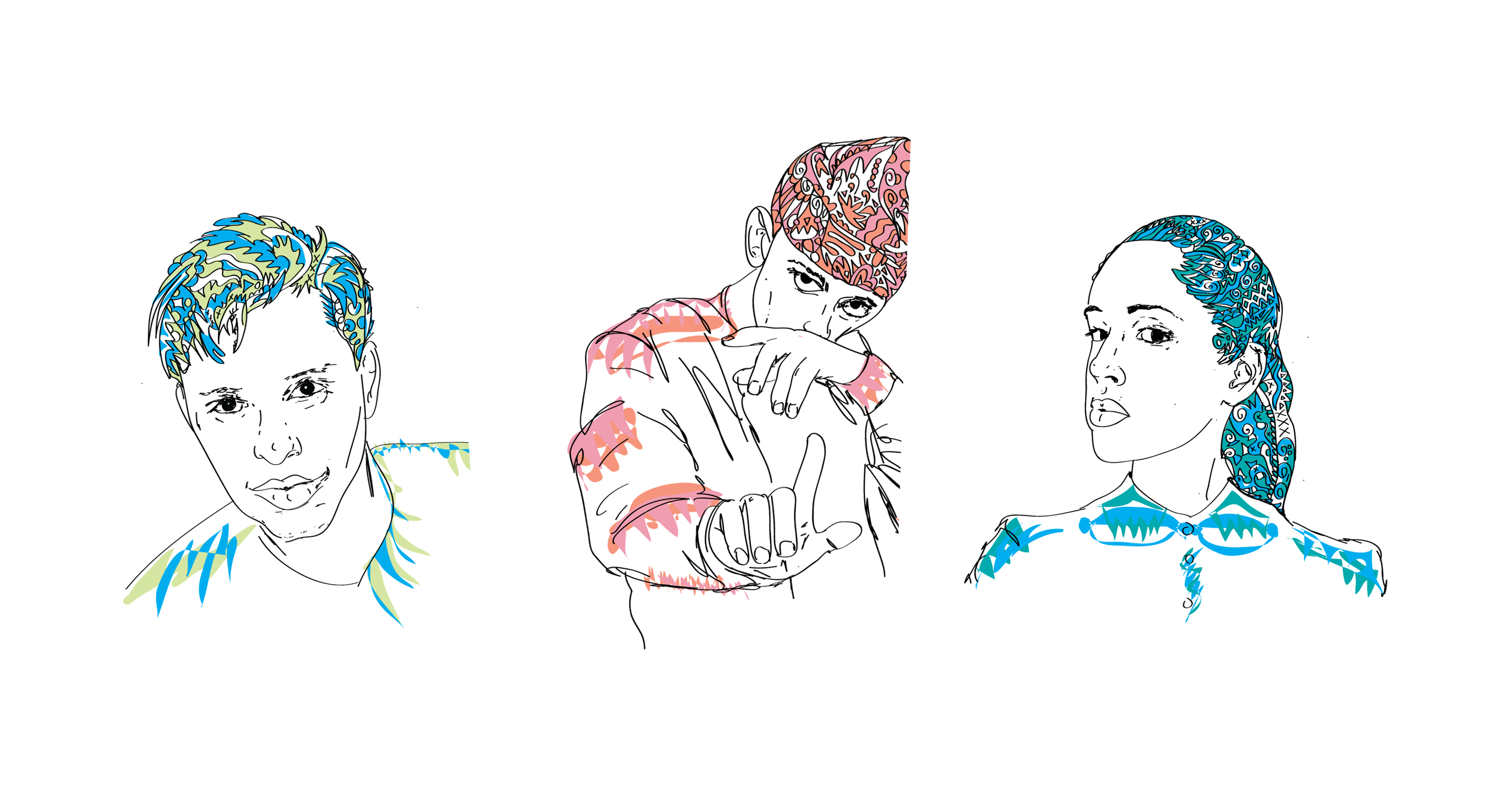The Class of 2016
Learn more about the 70 participants of the 2016 Red Bull Music Academy in Montreal
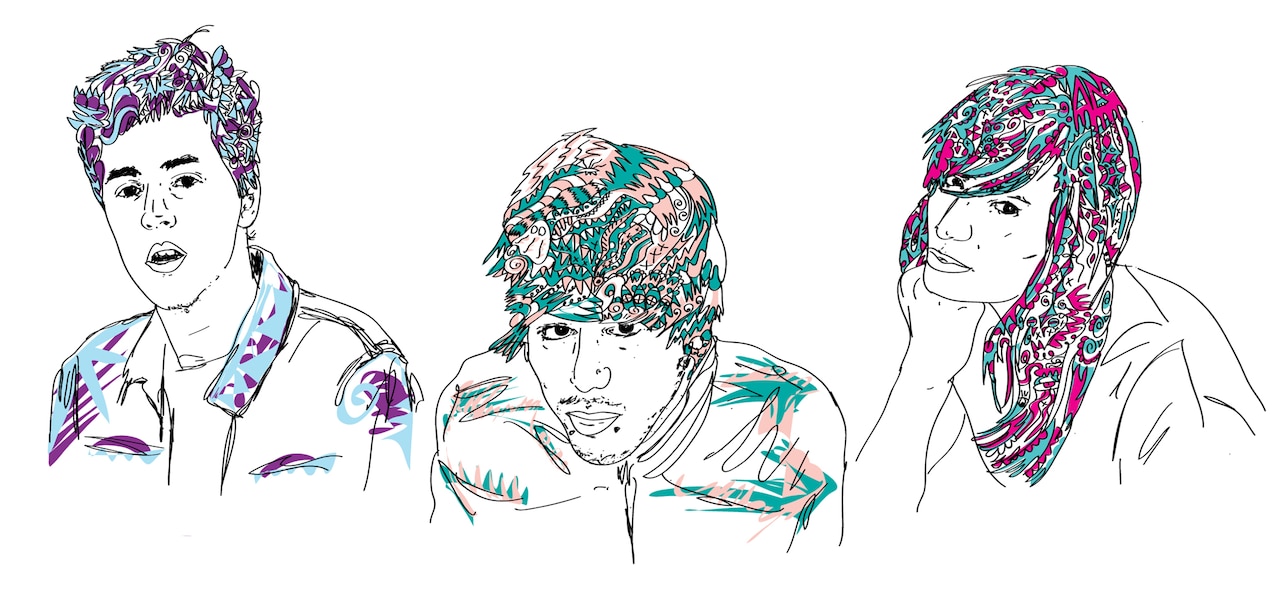
We are proud to welcome 70 artists from around the world to the 2016 Red Bull Music Academy in Montreal from September 24 to October 28. These artists from all corners of the globe will be invited to the Academy home at Phi Centre to take part in workshops, lectures and studio sessions with some of the best in their field, and also perform at a few of the city’s most esteemed venues.
To celebrate their announcement, we asked Brad Beatson to put together an illustration of each participant and wrote a bio that hopefully gives a bit of insight into each of these talented musicians. We think you’ll be hearing a lot more about each and everyone of them pretty soon.
This participant list for the 2016 Academy includes the 30 participants initially selected for the second term of the 2015 Academy in Paris. They will join 40 newly-selected participants, bringing the total number of participants in Montreal to 70 instead of the usual 60.
Thingamajicks // Érica Alves //
Lunate // iskeletor // Kidä // Denis Sulta //
Emma-Jean Thackray // Hyroglifics // Tay Salem //
Daudi Matsiko // About:Blank // Lamusa //
Partre // Beatrice // Kučka //
Matilda Abraham // Unbroken Dub // White Sample // Dani Shivers //
Cao // Buen Clima // AAAA // Joona Samuel // Auður //
Dreamcycles // ModVo // Johan Caroe // Invisible Church //
ArtSaves // MIIIN // The Venopian Solitude // Lontalius //
Fazerdaze // Merk // Tide Jewel // Idgy Dean //
Kamron Saniee // Taskforce // Your Friend //
Suicideyear // Nicholas G. Padilla // Swisha // Mirac // Schmieds Puls //
Etyen // Selfir // Shake It Maschine //
Yung Veerp // Pan Daijing //
Keita Sano //
Crystal / Sparrows // Chloe Martini // LOA //
River Tiber //
Angus Tarnawsky //
Marie Davidson // Casey MQ // Sayge //
Malibu // OK Lou // Drippin // RayRay // Oceantied // The Sine Painter // Niels Broos // Sofie Winterson // Sign Libra // Ghost Wavvves // UhAhUh
// Julián Mayorga

Thingamajicks
Vinicius Duarte could be reading Deleuze or listening to Pauline Oliveros right now. Or, he could be playing drums in a black metal band, running his Subsubtropics label or making sublime synthetic soundscapes under one of his many aliases; carried with him from art school in London to the tropical surroundings of Rio de Janeiro. Tune in, turn on,and drop the needle – on the twisted, warehouse-leaning Dieckmanns project, or the Balearic holiday of Thingamajicks – and prepare to fall down a rabbit hole that’s the perfect antidote to the club’s main floor. Whether he’s dabbling in outsider house and techno, art installations or beyond, the foundation of his sound is a raw, textural field. Time to get lost.
[Back to the full list]

Érica Alves
São Paulo’s Érica Alves has her head in the clouds but her feet firmly planted in the dirt. Her earthy voice exists in direct contrast to her instrumentals, which are ethereal yet grounded by stumbling drum machines and bubbling organic keys, all recorded through layers of cassette grit. (She’s a fan of both industrial innovators This Heat and dreamy French synth poppers Air.) It’s at once soothing and a little dark, like you’re listening in on demos recorded in her bedroom. In addition to her entrancing work on record, Alves has lately been exploring dancier territory, with a new live act that sees her typical beats incorporating more house and techno structures.
[Back to the full list]

Lunate
Despite the generally grey atmosphere of his hometown Bogotá, Manuel Cortés’ productions as Lunate conjure sunnier climes through luminous synth patterns and casual pacing. The mellow grooves and innate sense of positivity made Lunate a perfect match for Los Angeles-based house purveyors 100% Silk, who released his debut EP Far Shores in late 2014. Without direct access to any sort of musical mentor or technical education in Colombia, Lunate draws inspiration from all manner of songwriters ranging from Moondog to Marvin Gaye in his efforts to transmit house with ideological content beyond kick drums and hi-hats.
[Back to the full list]

iskeletor
Kerem Sevincli has always lived with music. The son of a drummer, the Turkish producer was given synths and percussion instruments to play with as a small child, so it was only natural that he would grow into the curious experimentalist that he is today. Operating a recording studio in his hometown of Istanbul, Sevincli has carved out a distinctive style built around plodding beats and misfiring digital bits. He dropped his debut EP digitally on the Turkish label Tektosag in 2013 and – another two years later – a physical release split across a cassette and 7-inch for the Portland label Boomarm Nation. This summer, he'll also release the Lurker at the Threshold EP via Innamind Recordings sublabel Blacklist.
[Back to the full list]
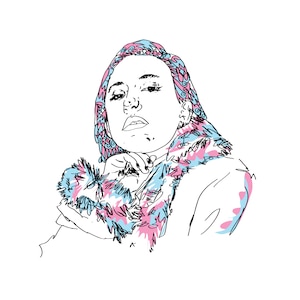
Kidä
Future-soul, avant-pop, trap&b singer and producer Kidä floats effortlessly between those modish hybrids. A former frontwoman for a New York-based soul band, Kidä also sang backup for several artists during her teen years in LA. After moving to London to study and pursue a now-defunct duo project, the well-traveled chanteuse struck out on her own. Today, she channels her past work and distills influences as disparate as world music, Christina Milian, Björk and Sun Ra to create music best described as psychedelic R&B. Whimsical, lysergic and sexy, her songs are eclectic electronic suites, employing polished songwriting, sultry vocals and an alluring falsetto with spellbinding ability.
[Back to the full list]

Denis Sulta
Hector Barbour is a man of many aliases, yet he’s best known for his work as Denis Sulta. A producer and DJ, Sulta is at the forefront of a new generation of music in Glasgow. His distinctive brand of house is primed for the dancefloor, but far more nuanced than the uninitiated might assume. The propulsive percussiveness of the genre is always present, but it’s often offset by a melodic warmth. With each song, he manages to wrest the emotive from the electronic. His progressive suites have led to releases on record labels such as Numbers, Dixon Avenue Basement Jams, and Mister Saturday Night. Under his other monikers, Atlus and Conrad Hart, he produces eclectic, equally melodic beats that deftly flit between electronic genres. But no matter the name, Barbour’s commitment to the progressive remains constant.
[Back to the full list]
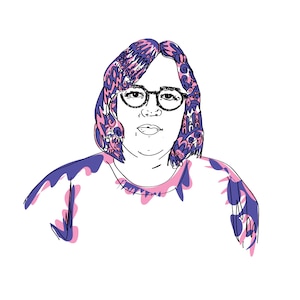
Emma-Jean Thackray
An accomplished trumpeter and composer who studied at both the Royal Welsh College of Music and Trinity Laban Conservatoire of Music and Dance, Emma-Jean Thackray’s compositions shuttle between omnivorous sonic exploration and reverent yet forward-thinking jazz. Some suites pull as much from Ellington-era big band orchestras as they do from Bitches Brew; others offer a Madlibian approach to electronic beats; still others harness Afrobeat rhythms reminiscent of Tony Allen. Her diverse yet unmistakably singular work moves seamlessly between carefully crafted freneticism and dark, brooding minimalism. No matter the arrangement, Thackray’s music is both challenging and emotionally resonant.
[Back to the full list]

Hyroglifics
Heralded by FACT as one of the “10 Drum & Bass Producers to Watch in 2015,” Hyroglifics should already be on your radar. The UK producer/DJ dropped several blistering sets on Rinse FM in 2014 and continues to release punishing and progressive drum & bass via Critical Music. Enamored with electronic music since his teens, Harris’ work effortlessly combines drum & bass with elements of grime, jungle and footwork. The low end is lugubrious; the percussion, though complex, hits like the blunt end of a battering ram.
[Back to the full list]

Tay Salem
A skilled multi-instrumentalist, Tay Salem has his roots in jazz, hip-hop and neo-soul as well as electronic music. His influences are equally diverse - Salem grew up admiring the raw lyricism of artists like Elliott Smith, but he also gets a rush from the production innovations of producers like Arca and Oneohtrix Point Never. In the wake of earning a degree in French Literature from the University of Warwick, adept early efforts proved testament to Salem’s expert use of space to insinuate isolation and emotion. He moves towards new horizons but remains on the same planet with the Night Mill EP, prepped for summer 2016 on the label Alter the Motion. Inspired in part by Salem’s view of neoliberalism, the release presents a running theme of industrialism and a sense of loneliness sublimated into meditative songs rooted in the emotions of relationships gone sour - whether that relationship is with just one girl or the world at large.
[Back to the full list]
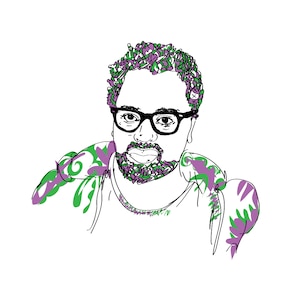
Daudi Matsiko
Born and raised in the United Kingdom, Ugandan singer-songwriter and guitarist Daudi Matsiko carefully crafts modern albeit reverent folk. Deft, melancholic picking reminiscent of Nick Drake is tempered by contemporary percussion and instrumentation, and Matsiko’s vocals derive their strength from their seeming fragility, a warble in notes that may or may not be intentional. With every song, his confessional lyrics cut to the marrow. After releasing two independent EPs, A Brief Introduction to Failure and The Lingering Effects of Disconnection, he signed to Naim Records and spent the beginning of 2016 touring with Blue Note trio GoGo Penguin.
[Back to the full list]
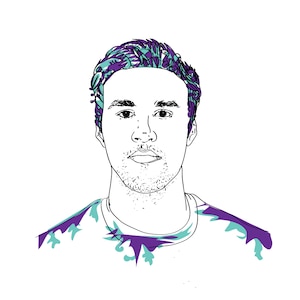
About:Blank
Marco Segato started organizing parties and DJing in 2009, simply as a hobby. But soon after that, he started seeing what he could do as a producer, spending a few years tinkering around before starting to share his work in 2014. The Milan-based artist takes on many names, using his birth name for mellower creations while going by About:Blank for electro-inspired tracks and collaborating with a friend for the techno project Aural Perception. For all of his endeavors – from the clattering floor-fillers to the near-ambient tracks – Segato draws from a varied list of influences, citing names like Dutch electro-techno artist Gesloten Cirkel, DJ Spider and classical composers such as Chopin and Beethoven. No matter the name he's using, Segato puts his own spin on the music, continually pushing himself in new directions.
[Back to the full list]
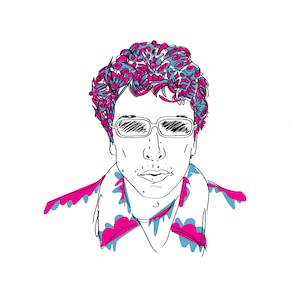
Lamusa
Lamusa is just one guy, but listening to his music, you’d think his songs were made by an entire band of gear-obsessed musicians. There’s a warm quality to his sound, which moves from sleazy, synthesized electronic music and shady synth pads reminiscent of the late ’80s to smooth and elegant ambient tunes with loose basslines. Occasionally, glossy drum machines thrust the listener into the club, but the BPM stays just calm enough to keep your cocktail safe while dancing and/or floating. It’s warped, glossy stuff that is innocuous for just long enough to make you feel uneasy, like glimpsing an alternate pop universe.
[Back to the full list]
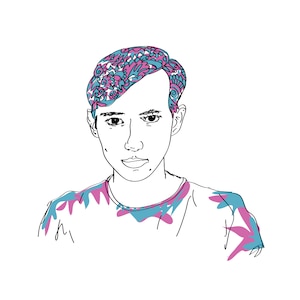
Philippe Partre
Since his early childhood Philippe Partre always knew he would be involved with music. After years of exploring different genres and sonic possibilities, he is now making that dream a reality, composing enigmatic avant-garde pieces largely based on own field recordings and granular synthesis techniques. While Partre’s current work could fall under the umbrella term electroacoustic, he is still as passionate as ever when it comes to exploring new territories or incorporating for older inspirations, be it industrial, free jazz, techno or even black metal.
[Back to the full list]
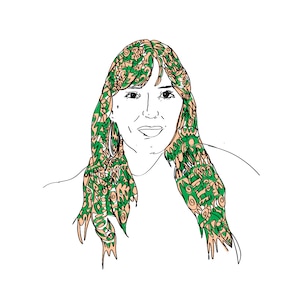
Beatrice
The music that Beatrice Lewis makes by herself is contemplative and gorgeously immersive. A vocalist, multi-instrumentalist and electronic producer from Melbourne, she has an artistic sophistication that weaves itself through every beat, bar and polyrhythm. Tracks such as “Grid” and “Beautiful Mind” unfold slowly but surely: lushly layered synths dappled with melody, topped with her own melancholy voice. But the producer, DJ, pianist and cellist has more strings to her bow: her live show, which she has showcased in opening sets for the likes of Mark Pritchard and Lapalux and at major Australian festivals such as Let Them Eat Cake and Rainbow Serpent, involves MCs and live drumming; she’s collaborated with Australian indigenous artists and musicians such as Eleanor Dixon, whose haunting voice graces “Everything Was At Peace”; and, as part of the Haiku Hands four-piece group of women, Beatrice cuts loose for bass-heavy, electronic post-punk workouts. She’s clearly someone who isn’t to be boxed in.
[Back to the full list]

Kučka
Back in her university days, Kučka decided to walk out of a psychology exam and head home to finish working on a track she was making. The move saw her kicked out of her course – but she now says the experience was “super liberating.” Kučka has since settled into a zone that meshes alt-R&B vocal stylings with endearingly hazy electronic production; 2014’s “Divinity” resonates as a neon-hued and swampy listen. In 2015, Kučka was named Stoney Road's Breakthrough Producer of the Year on the heels of her Unconditional EP, as well as receiving the Western Australian Music Award for Best Electronic Producer and Best Experimental Act, and she's collaborated with artists such as Andrei Eremin, A$AP Rocky, Cosmos Midnight and fellow Australian producer Flume.
[Back to the full list]

Matilda Abraham
As a teenager, Matilda Abraham used to have nightmares about being unable to write music. A surprise gift of a guitar changed that, and Abraham hasn’t stopped since. She’s studied jazz and played in a jazz band, but it was writing music on her computer that led her to the delicately crafted electronic compositions released as her first solo material in 2016. Idiosyncratic pop songwriters such as Björk and Feist are her greatest inspirations, and in the layered vocals and warm synth foundations of songs such as “New Balloon” and “Hidden Treasure” she finds a spiritual rather than direct sonic echo of that artistic lineage. Not to be underestimated, either, are her songwriting skills and easy way with a hook.
[Back to the full list]
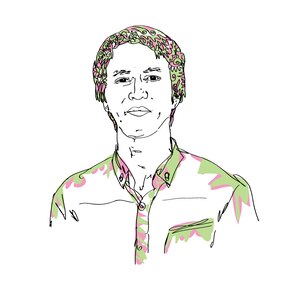
Unbroken Dub
Russian DJ and producer Denis Safiullin performs as Unbroken Dub and represents the Tyumen-based Hot Wax team. His earliest works as a producer emerged in 2011 through the Rawax imprint, showcasing a staunch and cold palette that was nonetheless compelling in its minimalist rhythms. Experimenting with analog gear and toying with compositional conventions, Safiullin’s tracks eventually landed on iconic Dutch label Delsin. Since then, he’s bounced between claustrophobic and expansive sounds, nodding to techno giants like Basic Channel and Jeff Mills along the way.
[Back to the full list]
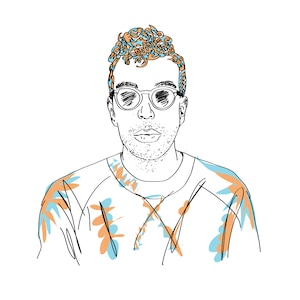
White Sample
It should come as no surprise to learn that White Sample is a huge fan of Aphex Twin and Autechre. His glitchy, abstract productions have tons going on – and when a beat appears, more often than not it recalls (but doesn’t exactly replicate) hip-hop’s bottom-heavy breaks. White Sample’s penchant for the sweeping romance of lengthy chords that seem to stretch into infinity signal a human at the center of it all. That’s not in question with this Chilean sound design enthusiast who has poured his creative energy into electronic music since 1998. His main influences? “Life, the future, my family, infinity.”
[Back to the full list]
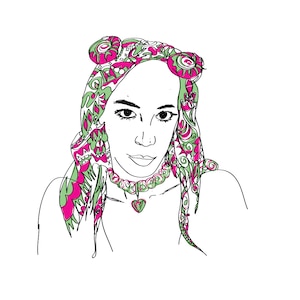
Dani Shivers
There’s a section in Dani Shivers’ record collection dedicated exclusively to witches. But even though the Tijuana-based singer and producer loves the darkness – including horror movies and criminology – her music radiates an almost angelic gleam. Sonically, her closest kin might be the early manifestations of Nite Jewel and Grimes, with pristine songwriting shining through even the thickest layers of fuzz, reverb and synth atmospherics. Dani has been writing since early childhood and it shows – her ear for lyrical hooks and arrangements is just as finely honed as her relationship to ghosts and magic.
[Back to the full list]

Cao
A 2015 essay by Cao is titled “The Ruin and the Sonic Sacred” and reads as a philosophical parsing and repositioning of noise music. The music released under this project could be considered ruinous, yet sacred – and definitely falls under the nebulous umbrella of noise. The creative answer to the Peruvian artist’s academic flights pairs the pastoral with the haunted, desperate discord with fragile layering. These divisive contradictions usually flesh out in tracks better described as release-length excursions –see her early 2016 release Marginal Virgin on Opal Tapes. Using a library of sounds including tribal fare from Cao’s native country and glitched-out, static-laden electronica from the UK, where she now resides, what results is a mixture that’s rightfully intelligent and left-of-center.
[Back to the full list]
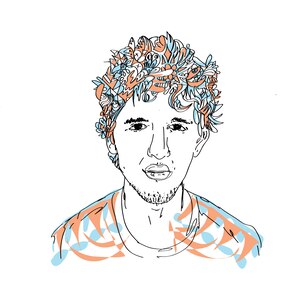
Buen Clima
Based in Santiago, multi-instrumentalist/producer Buen Clima studies musical composition at the University of Chile, and his music certainly reflects that pursuit. Yet while the music he makes certainly varies across his solo and band work, there are nonetheless characteristics that run through them all. Most noticeably, there’s an incredible amount of attention to the space between notes – whether within a freeform jazz composition or something more (though never entirely) conventional, the gaps and pauses are just as much a part of his songs as the music itself.
[Back to the full list]
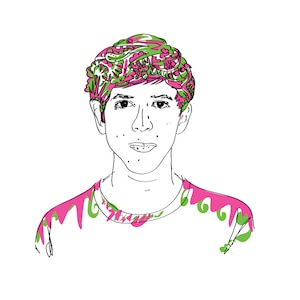
AAAA
Gabo Barranco has a recklessly curious ear for distortion. An enthusiast and creator of electronic music ranging from classic acid house to crackling ambient to Venetian Snares-style glitch bass assaults, AAAA channels his admittedly shy personality into an identity-hopping slate of ideas that’s undeniably intense. Whether his musician’s alias is a bit of alphabetical line-jumping or a good verbal reaction to the bracingly all-out noise that his music gives voice to, his formative releases – 2014’s twitchy, playfully offkilter Shiva Watts and 2016’s 808-sanctified True Peak EP – show off a deep fascination with both techno-roots tradition and the desire to transcend it.
[Back to the full list]
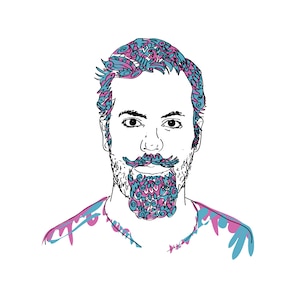
Joona Samuel
As an audio designer, sound editor and recordist, Joona Jaakkola has worked on several sides of a mixing board, typically in the service of film sound. As a composer he displays similar stylistic versatility, only built to serve a more widescreen purpose than just background music. His pieces are intended to work with visual accompaniment, to the point where the most useful descriptions bypass genre and invoke mise-en-scene instead – jazz that’s played like high-contrast black-and-white noir, ambient drones that stir up visions of sweeping landscape shots and minimal 4/4 beats that click along like montages of futuristic machinery.
[Back to the full list]
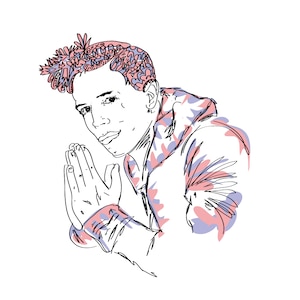
Auður
Though he’s produced for some of the biggest names in Icelandic hip hop, Audunn Luthersson’s own music eschews hip hop tropes like ego and posturing in favor of a lovelorn style of pop. Through studying advanced jazz guitar at Tónlistarskóli FÍH and his solo project Auður, Luthersson was initially inspired to switch from jazz to electronic music after attending the Sónar Reykjavik festival. Nowadays, he loves FKA twigs just as much as Esperanza Spalding. His own music as Auður, meanwhile, is dark, melodic and pretty, operating within the distinct world of modern Scandinavian R&B. (He's currently putting the finished touches on an Auður LP). A self-proclaimed “collector of bad memories” who wants to mke every concert a memorable experience of human emotion, Audunn seems to know just when a song needs to transition from a slow burn to a scorch.
[Back to the full list]
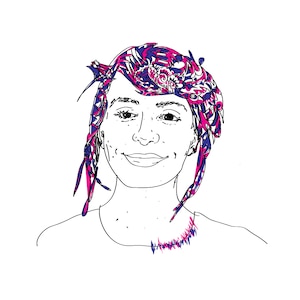
Dreamcycles
A visual artist whose work explores the emotional experience of space through sound, Dublin-based Dreamcycles finds inspiration through listening to an array of sonic practices. Creating mixes using these works is a kind of research and therapeutic process for the 22 year old. She engages with field recording and vocal experimentation as part of a blossoming exploration of sound, and dreams of a musical community that exists somewhere between the club and gallery context, where people are exposed and may open up to music and sound practices that extend far beyond typical club content. “Recorded sounds have always been a way for me to depart from our material world and enter a space beyond,” she’s said. Happily, Dreamcycles’ mixes do exactly the same for us.
[Back to the full list]
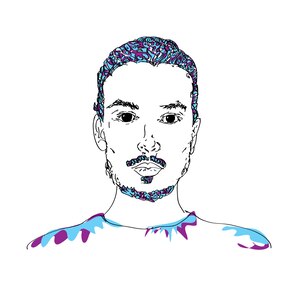
ModVo
Swedish producer Ludvig Ward is still in his teens, but he’s already making sophisticated dance tracks – embracing the frenetic pacing and sampling of footwork and IDM and putting his own spin on it with sidewinder beats, warm synth textures and colorful harmonics. Performing as ModVo, he’s proudly queer and identifies as male “to an extent,” he says. He studied music at his upper secondary school in Gothenburg, and he’s honed his skills on the computer, synth and sampler by playing live gigs, making compositions for a short film and for a street show. His dizzying tracks “Aloe Larva” and “Gel Vera” were released in 2015 on the Hyperboloid Records imprint #internetghetto.
[Back to the full list]
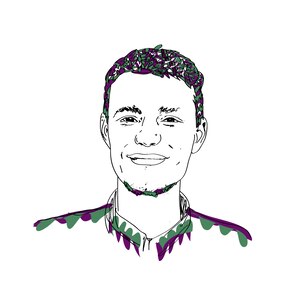
Johan Caroe
With a Masters in film music and film composition, it’s little wonder that there’s a cinematic quality to the music of Johan Carøe. In 2015, he collaborated with famed composer Angelo Badalamenti for the score to Danish feature film Gold Coast and he’s contributed scores to numerous short films, including Tsunami, a selection at the 2015 Cannes Film Festival. However, while much of his focus is on ambiance and atmospherics, he’s also a guitar player and a member of an Afrobeat instrumental band in his home city of Copenhagen, Denmark, where he also earned a degree in musicology. Carøe refutes the idea of any one genre capturing his work but – at a push – he would call his work ambient techno, insisting that beats play just as important a role in his music as atmosphere.
[Back to the full list]
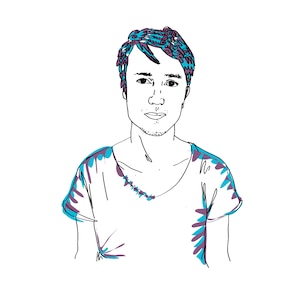
Invisible Church
Unease permeates every corner of the music Oleksandr Zhuk creates as Invisible Church. The Berlin-based producer spent years honing his production skills by himself, and along the way became proficient at creating unnerving atmospheres in which empty space is every bit as intense as noise. It’s an appropriate sound for an artist who absorbed Stephen King novels as a kid and who was drawn to the grimy melancholy of Burial’s music. He shared his first collection of tracks, the Invisible Church EP, in February 2016, featuring heavy numbers that surround the listener and drop them into a jitter-inducing headspace similar to works by the Haxan Cloak and Koenraad Ecker.
[Back to the full list]
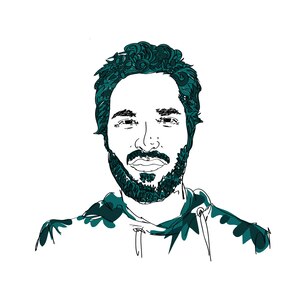
ArtSaves
Living in Tehran, where nightclubs are prohibited by law and the streets are often plunged into silence after midnight, Iranian producer ArtSaves made his initial musical marks behind closed doors, DJing at intimate house parties in the city. Channeling slick, looping Barry White samples through smooth chord washes or saturating supple slips of bass with delicate acidic glitches, his music positions itself as quintessential early hours listening, ideal for massaging aching limbs and weary minds.
[Back to the full list]
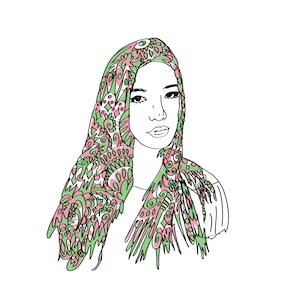
MIIIN
MIIIN’s self-described “xeno dark music” hints at the way the internet’s lack of real-world geographical distance can inspire separation from familiar territory. Whether she’s building footwork DJ sets that range from Kenji Kawai’s score to Ghost in the Shell or carving bass music down to its minimalist core, her experimental style emphasizes the bracing weirdness found in both familiar regional touchstones and further-flung corners of electronic music. But MIIIN’s connections between her South Korean homebase and the wider world – building a female-centered crew of DJs and establishing an archive of local DJ mixes under the name Seoul Simin – are still deeply conscious of the ways that music can communicate a particular look into a globe-spanning unreality that feels increasingly possible to reach.
[Back to the full list]
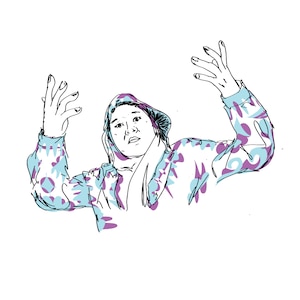
The Venopian Solitude
Malaysian songwriter The Venopian Solitude creates experimental electro-pop out of a menagerie of synths, stringed instruments and whatever found objects she might have at her disposal. She brings it all together with her powerful voice, capturing both whimsy and sadness as she sings in English and Malay. Her 2015 Kereta Merah EP adapts a Malaysian nursery rhyme for a conceptual set of songs about a psychotic father and a child suffering from mental illness – which just goes to show the conceptual and emotional depth of her work. She’s performed at festivals and workshops in Amsterdam, Berlin, Singapore and Japan, and she once made it past the infamously discerning doormen at Berlin’s Berghain nightclub while rocking a hijab.
[Back to the full list]
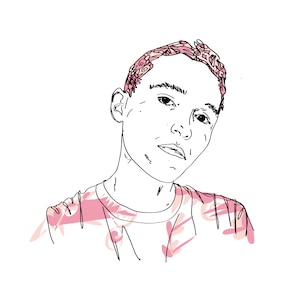
Lontalius
There’s a particular tone and texture to walking home from a party alone, or sitting in bed while the person you’re crushing on is at said party without you. The music of Eddie Johnston, a young New Zealander, captures that feeling perfectly. As Lontalius, he takes heartbreak and stumbling into adulthood as his guiding principles, conveying heart and sincerity with finespun vocals, shuffling percussion and synthetic melodies. Another alias, Race Banyon, is deployed for his electronic productions and live sets. In 2015, following a run of self-released EPs and a guest spot on Ryan Hemsworth’s Alone for the First Time LP, Johnston signed with New York label Partisan Records and released his debut album I’ll Forget 17. Since then he’s relocated to Los Angeles and shared lineups with Death Cab For Cutie, Jamie XX and Kaytranada. Youth and young love may be fraught, but as an artist, Johnston is finding his way.
[Back to the full list]

Fazerdaze
Amelia Murray makes hypnagogic bedroom pop with the saturated, nostalgic quality of a Polaroid photo. Picking up the electric guitar at age 14, Amelia played in bands throughout her high school years and later learned how to record from home, leading to the creation of her current musical project Fazerdaze. A self-professed introvert, her material is prone to moments of Elliott Smith-style melancholy, but it has teeth – loamy, reverbed guitar riffs show the influence of female-fronted bands like Mazzy Star, Sonic Youth and the Breeders. Live, Murray keeps multiple pedals, mics, a laptop and electric guitar all in orbit, layering double-tracked vocals over programmed drums. Her debut self-titled EP arrived in 2014, with an album due before the end of 2016.
[Back to the full list]

Merk
While building his alt-pop launchpad Merk, Mark Perkins spent his days packing boxes in the red light district of Auckland, New Zealand. Perhaps he loaded up all his influences in a tightly-bound package as well: The Beach Boys, Pavement, George Martin. Merk’s songwriting lets his guitar and synth prowess come through in colorful, weird and pop-sensible waves. The payoff? We find an artist at home with an airy, gentle vocal tone, fuzzy riffs and a measured understanding of the balance between fresh and timeless. In his own music, as well as in his work with other New Zealand artists, Merk has a knack for dropping memorable melody into obscure places.
[Back to the full list]

Tide Jewel
Tide Jewel is a producer, self-taught pianist and visual arts teacher who folds influences as far-reaching as French literature and experimental jazz into his radical noise soundscapes. Inspired by how artists such as Grouper, Laurel Halo and the Blood Brothers pull human voices through machines with emotion, Tide Jewel’s own voice is one that speaks to the power of the individual in a world of noise.
[Back to the full list]

Idgy Dean
A self-described feminist loop artist, mystic and yogini, Idgy Dean infuses her one-woman psychedelic rock with a calming Zen presence that belies the emotional intensity of her DIY beats. Although she released her debut LP Ominous Harminus in 2015, the Brooklynite otherwise known as Lindsay Sanwald has been making music since she was a teenager, inspired to play drums, guitar and bass and write her own songs by the dual presence of Kate Bush and Nine Inch Nails. If those influences sound divergent at first glance, think again - Dean’s music combines a visceral mysticism with a performative grandeur that reflects the dark and the life-giving in equal measure, doling out tribal drum beats and clangorous guitar lines underneath airy vocals during her live shows, which are symphonies of emotion wrought from loop pedals. A magnetic performer, Dean’s ethereal experimental pop has naturally found its way into theater, when she was responsible for the live score of The ETLE Universe, a “queer feminist cyborg time-travel epic thing.”
[Back to the full list]

Kamron Saniee
Kamron Saniee is a classically trained violinist turned electronic producer who specializes in what he describes as “abstract expressionist techno.” Inspired by musical cultures ranging from Persian classical to avant-garde electronic production, his compositions are like programming languages come to life: digital textures and flickering rhythms that glimmer with tons of soul and semi-tonal melodic nuance. He first got into violin at a young age, honing his craft under established instructors in New York, Pittsburgh and Chicago. Later, while doing an internship in Berlin, he discovered the city’s thriving techno scene. Saniee has adopted the Macbook Pro as a new instrument, and since 2015 he's been putting on intuitive live shows in DIY spaces and clubs across New York, while at the same time exploring spatial sound possibilities as part of the CT::SWaM experimental concert series.
[Back to the full list]
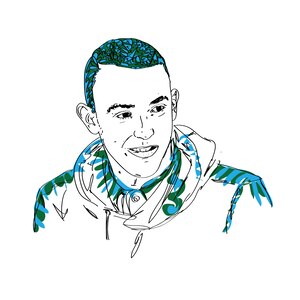
Taskforce
Inside the hive-mind of US producer Taskforce, there’s a cacophony of sounds, memories and ideas: of listening to Throbbing Gristle and Aphex Twin as a pissed-off kid, and then channeling it all into the tedious (then euphoric) motions of learning how to use Fruity Loops while still in middle school. He calls his sound “Timbaland on 1200mg of DXM making techno,” and it shows. It’s not just a “bedroom” endeavor, though: he’s produced beats for experimental NYC rapper Le1f, Fade To Mind’s Nguzunguzu have remixed him, and in late 2015 he signed to Boysnoize Records for the Liquid Cooled EP.
[Back to the full list]
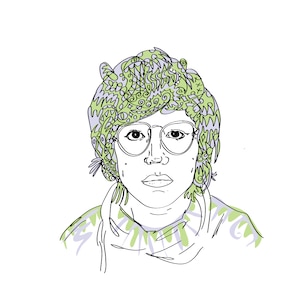
Your Friend
Hailing from Kansas and named after a fictional TV character, Taryn Miller finds herself through her Your Friend project: playing guitar, percussion and bass to make soaring ambient pop, with hints of country and electronic blues, and wrapping it all up in delicate vocal harmonies that caught the ear of seminal British indie label Domino. Domino released her first EP Jekyll/Hyde in 2014 and in January 2016 they put out Miller's debut album Gumption, which showcased a turn towards collage-based musical textures. Miller is touring throughout summer 2016 with Kurt Vile while maintaining ambitions to score films and create sound installations, reflecting a multimedia approach to music production that is thoroughly modern.
[Back to the full list]
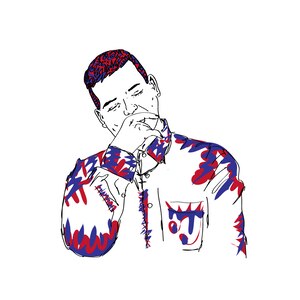
Suicideyear
Louisiana’s James Prudhomme sits singularly - and comfortably - on the outer fringes of southern US rap production. His schooling in the styles of DJ Paul, Juicy J, Zaytoven and Lex Luger is apparent, but so is his impetus to bring an experimental, ambient-inspired edge into the equation. His beats have caught the ears of rappers like Yung Lean, Rome Fortune and Antwon, and his 2013 instrumental mixtape Japan quickly became something of a cult classic. Signing with Daniel Lopatin’s Software label, his Remembrance EP took his emotionally charged soundscapes even more widescreen, striking an extraordinary balance between ethereal expanse and thump in the trunk.
[Back to the full list]
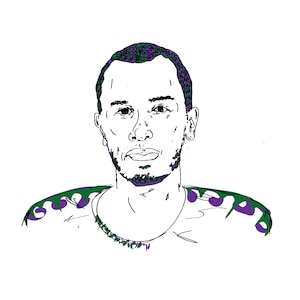
Nicholas G. Padilla
Known by a series of aliases – Perma Boy, DJ Club 1235, Parrot Jungle 95 – Miami producer and DJ Nicholas Padilla is as elusive as he is mischievous. His avant-garde grime and techno tracks are mostly unreleased, and when he does send them out to the world, they’re embedded with subliminal messages and secret codes. A string of efforts he released anonymously in 2016 were made available only to his friends and family, and to gain access to the promotional materials, listeners had to pick up on clues in the music itself. Yet if he’s playing mind games, he’s also exploring the depths of sound, evoking the rumble of warehouse raves and the humidity of cybernetic rainforests with his murky soundscapes and clanging grooves.
[Back to the full list]

Swisha
As part of the Juke Bounce Werk crew, Swisha helps host weekly parties dedicated to bringing Chicago footwork to his home of LA. As a producer, he manages to put his own distinct spin on the genre, bringing in elements of underground dance culture from across the USA as well as inventively deployed samples: Crystal Waters, Kelela and on “Ass Like That She Was Born 2 Chat,” both Lil’ Kim and Nelly Furtado. Swisha’s sense of percussion and melody reflects his musical upbringing: his musician father started him on the drums as soon as he could sit up. It’s all been building up – via two EPs in 2014 and 2015 celebrating his Soundcloud follower milestones – to Swisha’s debut full-length. Perfecto, released by Dome of Doom in April 2016, is the most vivid and Technicolor manifestation of his vision to date.
[Back to the full list]
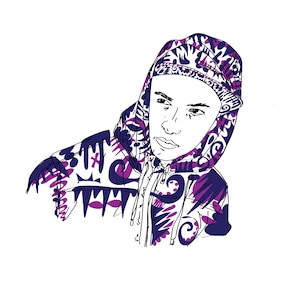
Mirac
Sebastian Watzinger started his musical career as MC Mirac on his 2009 debut album Mastaplan, a collaboration with fellow Austrian producer Feux on Viennese label Duzz Down San. As Mirac, he’s also released two EPs with the label: 2010’s Mirac & The Miracles and 2014’s Was Willst Du Tun, Fisch?, as well as the Kreuzwort LP as a member of the group Polirac. Over the years, beat-making rather than MCing has become his priority. (Although he still makes time to work as a sound designer for television and feature films). 2014 found him going viral with “Alaba,” a Lil’ Wayne flip dedicated to an Austrian football player; when the British rap scene discovered him, the results were irresistible productions for artists such as Lady Leshurr and Paigey Cakey. The jagged unpredictability of Mirac’s beats was a perfect fit for both; his own instrumentals are full of surprising left turns and blends, such as a pitched-down vocal paired with imperious strings on “Oh Oh.”
[Back to the full list]
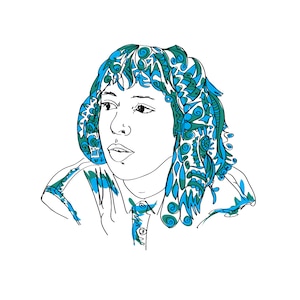
Schmieds Puls
Not only does Viennese musician Mira Lu Kovacs write and record with her band Schmieds Puls, she also teaches songwriting, singing and breathing techniques. She began playing music as a child, singing in a made-up language and recording her efforts to cassette tape. In more recent years she was part of a choir, experimented with various projects in different styles and toured Australia’s east coast for six weeks. She did so while she studying jazz singing at the Anton Bruckner University for Music, Drama and Dance, but when they wouldn’t allow her to postpone her studies while she was away, she quit. That defiance comes through loud and clear in her music, which she describes as acoustic pop written to sound as unpredictable as possible.
[Back to the full list]

Etyen
A composer, producer and sound designer, Etyen wears many hats. There’s a through line to the Beirut-based musician’s work, though: A heavy dose of emotion. Etyen counts Sigur Rós as one of his foremost influences, and you can hear their sweeping grandeur in nearly everything he does. “Indie, electronica something” is how he modestly explains his sound. And it’s not a bad way of putting it. A frequent collaborator, Etyen weaves together the electronic and acoustic expertly, with violins, vocals and his own guitar playing often coalescing into a swirling and evocative mix that is guaranteed to bring a tear to your eye – in a good way.
[Back to the full list]
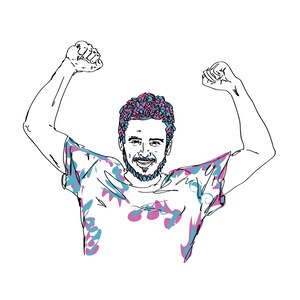
Selfir
South African producer Luc Veermeer is one-half of Christian Tiger School, one of the most compelling crews making music in Cape Town. The duo’s debut album Chrome Tapes was released in 2015, synthesizing the influences of Madlib but steering away from the LA beat scene influence towards the propulsive intensity of straight-ahead trance and techno. When working solo as Selfir, Veermeer puts a sluggish and contemplative spin on Stones Throw-style hip-hop by exploring the textures of blown-out bass grooves and rave-era synth work – Yeezus proved to be a major influence on his exploration of artists like Arca and the Haxan Cloak as he began to blend more ambient styles with elements of trap. Both names have but a few releases out, but it’s already clear that Veermeer’s future is a bright one.
[Back to the full list]
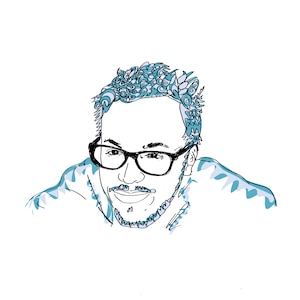
Shake It Maschine
Learning the trumpet at the ripe age of nine, Yoan Jaquenoud has always dabbled in music making, but it wasn’t until he was 20 that he discovered electronic music at a festival and made it his creative passion. The Swiss producer and DJ now works under the name Shake It Maschine and draws heavily on the stutter of Chicago footwork while shimmering and fluttering outward from that influence, often landing at a smoother and more melodic endpoint. Strangers, his collaborative full-length with fellow Swiss producer Mr. Pigman under the moniker SIMPIG, dropped in 2015 on the Argent Sale label.
[Back to the full list]
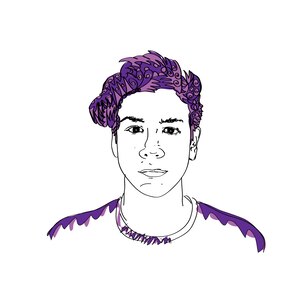
Yung Veerp
Vincent Ruiz is a double bass player by day and a producer of sleazy machine funk by night. Classically trained at the Musik Akademie Basel, and soon to pursue a Masters in Performance at the Dansk Rytmisk Musikkonservatorium, his acoustic band Plaistow re-interprets early American minimalism and 4x4 techno structures. After releasing a few albums they’ve made the rounds at renowned jazz festivals - in Montreux, Rotterdam and London - but Ruiz still finds time to indulge in his synthetic dream-ego, Yung Veerp. Smirking hardware jams take shape in his bedroom studio, and are committed to tape on a four-track cassette recorder. Both projects reflect their maker’s refined ear, and his love for the patient abstractions of Aphex Twin and Steve Reich.
[Back to the full list]
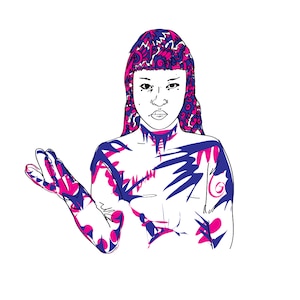
Pan Daijing
Perched on the cutting edge where Shanghai’s music and art scenes blur into one another, Pan Daijing’s music is steeped in dark noise and cinematic atmospherics, drifting into eerie Morphosis-esque drone and twisted beats. She’s crafted sonic installations for exhibitions and live scored art performances and dance shows; recordings-wise, there’s a tape on Noisekolln and forthcoming EP with Bedouin Records. Daijing is currently collaborating on a sound performance project centered around her vocals and three mobile speakers as well as making soundtracks for film and fashion shows. Influenced equally by 1980s industrial music, philosophy and Chinese minority and Tibetan music, field recordings in temples and ritual practice are all in day’s work for this bladerunner.
[Back to the full list]
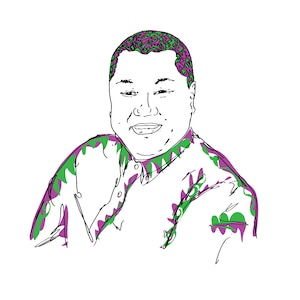
Keita Sano
Keita Sano hails from the Japanese city of Okayama, but his prolific output of songs exploring the limits of house and techno have reached listeners all over the globe, released by imprints such as New York’s Mister Saturday Night and Canada’s 1080p. HIs father’s love of jazz influenced Sano’s music sense, while his older brother not only exposed him to electronic styles but also gifted him his first MPC1000, which he used to craft his first tracks. Fitting this eclectic introduction to music, Sano’s tracks run from deep house shufflers to wilder creations full of horn and vocal samples, and he’s always cooking up something new, refusing to stay chained to one single genre or template.
[Back to the full list]
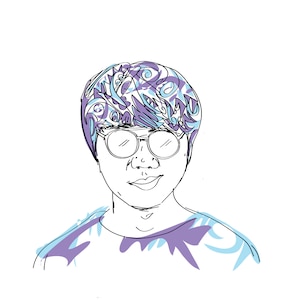
Crystal / Sparrows
When he was 13 years old, Ryota Miyake fashioned an instrument out of a cardboard tissue box and a rubber band, and recorded a loop of himself playing his impromptu guitar. Since then, he’s taken his interest in tape recordings into an experimental pop zone. As part of the band Crystal, he crafts music that weaves together influences like the Warp label’s early releases, the soundtrack to Sega’s Out Run and the pop-leaning melodies of The Beatles. (2014’s Dream Incubation project on Sound Pellegrino was co-produced by Hyperdub’s Ikonika.) Recording on his own as Sparrows, Ryota’s music heads in a more intimate direction, as he flirts with folk and ambient vibes to conjure up woozy avant-garde synth pop concoctions.
[Back to the full list]

Chloe Martini
Anna Zmijewska first realized she wanted to make music when she was 15 years old, after stumbling across a video of Japanese composer Ryuichi Sakamoto on YouTube. Seven years later, having taught herself entirely from online tutorials and dropping out of college to pursue music full-time, she has toured in Europe and Asia, produced orchestral film scores and been commissioned for official remixes on major labels like Atlantic, Columbia and Universal. Since 2013 she has released EPs under her Chloe Martini alias on Roche Musique, Mellow Orange and Take Care UK; music that traces lines between slick ’80s-influenced R&B, textured soul rhythms and crisp, glacial pop melodies.
[Back to the full list]
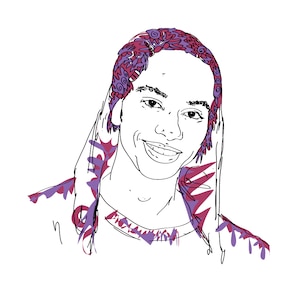
LOA
Dominik Urbaez Gomez’ musical beginnings can be traced back to metal band System of a Down’s sophomore record Toxicity. Although not retaining the vocal onslaught or the guitar shrapnel of this inspiration, this Polish artist can be found infusing percussive tenacity in every programmed phrase he produces under the artist name LOA. The most clattering sounds aren’t just in his drum patterns – indeed, they do slap and pop with finesse – but his synth patches. Percolating on one track and punishing the next, these fine-fingered arrangements track a progression from the top-heavy rattle of trap music to a lighter, world-class take on electronica’s club circuit.
[Back to the full list]
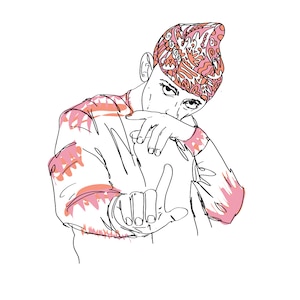
River Tiber
As River Tiber, singer/beatmaker Tommy Paxton-Beesley is unafraid to push his love for R&B and hip-hop production into unusual places: pitching his vocals to sound like Mariah Carey, multitracking his voice into a dozen ghost choruses, and narrowing the gap in the soul spectrum between Jodeci and Flying Lotus. His early years have already put him into close working contact with Toronto peers like jazz-funk iconoclasts BadBadNotGood (he did overdubs on their 2014 album III and 2015’s Ghostface collaboration Sour Soul), while previous releases like 2013’s The Star Falls EP have shown just how starkly his blend of R&B and bass music stands on its own. 2015 proved to be a banner year, with Tiber collaborating with Pusha T and Kaytranada as well as appearing on Drake's If You're Reading This It's Too Late , all ahead of his debut album Indigo coming June 2016.
[Back to the full list]
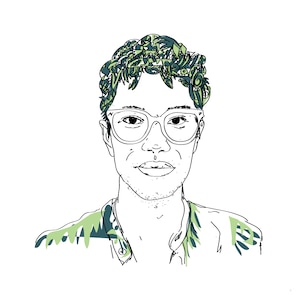
Angus Tarnawsky
Born in Australia, based in Vancouver and having recently spent five years in New York, Angus Tarnawsky’s musical vision is as diverse as his upbringing. Primarily a drummer, he’s played as a session musician for numerous bands from around the world and produced, recorded and played drums for the debut Flowers Of Evil record, which blended hardcore and post-punk with frenzied aplomb. What the producer/instrumentalist does now, however, is an entirely different beast, creating nuanced and at times nihilistic instrumentals that are unsettling and discordant, minimalistic yet also widescreen. When working on his solo music, Tarnawsky plays and records on acoustic drums before processing them with an electronic rig, blurring the lines between the synthetic and the organic to create tunes that veer from delicate to distorted and apocalyptic.
[Back to the full list]

Marie Davidson
After studying classical violin in her youth, Marie Davidson became so enamored with analog electronic music that she dropped out of school to pursue it. Formerly a member of several Montréal-based bands, Davidson’s singular solo work has since appeared on a variety of indie labels, including Austin, TX’s Holodeck Records and DFA Records as a member of Essaie Pas. Armed with an arsenal of synthesizers, drum machines, sequencers, portable recorders and pedals, Davidson now blurs the lines between techno, Italo disco, synth pop, house and more. With each song, you wonder whether she’s channeled lost sessions from Giorgio Moroder or Eduard Artemyev. Often delivering her arresting, hypnotic vocals in both English and French, her atmospheric soundscapes are as meditative as they are kinetic, the kind of electronic music that can catalyze life-altering decisions.
[Back to the full list]
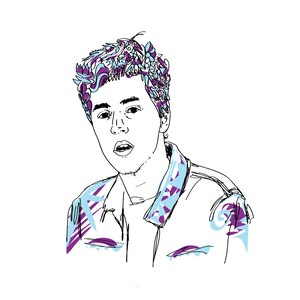
Casey MQ
Toronto’s pianist/vocalist/guitarist Casey MQ – real name Casey Manierka-Quaile – switches between melancholic soul and neo-orchestral movements, groove-laden electronic pop and piano-based ballads dripping with sadness and drama. Beyond his solo work, Casey MQ is also in a Toronto band called Unbuttoned, and has spent time as a songwriter-in-residence at the Canadian Film Center, where he has composed original music for a number of films. A classically-trained pianist, he began learning his craft at the age of eight, and his current output sees him building and expanding on that foundation, as well as delving into the world of producing both for himself and others.
[Back to the full list]
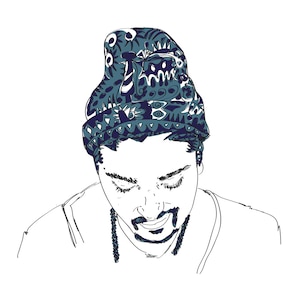
Sayge
The benefits of multiple monikers are manifold. Sayge AKA Marcel Mendez knows better than most. Before he recorded under his new sobriquet, the Ontario-based producer, vocalist, and multi-instrumentalist (jazz bass, drums, piano, guitar) released music as Astral, Sage’s Space Trio and Little Ghost. As Astral, he flipped samples from his ever-expansive record collection, creating warm, head-nodding instrumentals best-suited for playlists with songs from beat masons like Madlib and Knxwledge. Under Sage’s Space Trio, Mendez played multiple instruments, synthesizing the influence of his piano-playing father, jazz greats like Jaco Pastorius and J Dilla to birth a unique, jazz-inflected hybrid. As Little Ghost, he flexed his plaintive crooning over dark electronic and synth pop suites. The music he plans to release under his latest stage name, Sayge, is influenced by an array of contemporary R&B and future bass, the kind of music made by artists like Kehlani and The Weeknd. There is no doubt that Sayge’s interpretation will be as singular and exciting as his previous work.
[Back to the full list]
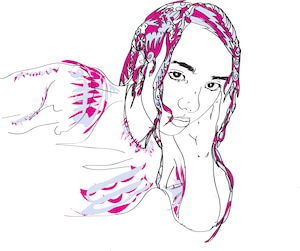
Malibu
If there are any barriers left between mainstream pop and ambient experimentalism, Malibu is passing through them like water. With a quiet, gauzy intensity that finds emotional power in angel choirs, rushing winds and Auto-tuned vertigo, Malibu’s productions (under that name as well as her side project DJ Lostboi) bask in an otherworldly sincerity that sidesteps nostalgic irony. Streamlining teen pop and video game soundtracks into the Brian Eno tradition has proven to be a rich vein of creativity for the Bordeaux-based, Angola-raised artist: A pair of early 2016 mixes, The Doomed Life of a Lie and The Magic Key, reveal a deep knowledge of aesthetics to play with and the promise of a wide star-field of genres to sink into.
[Back to the full list]

OK Lou
Marylou Mayniel’s beguiling music has soft edges but a stone-hard core, her hazy, low-slung electronica occasionally accompanied by mesmerizing drawled and talkbox-affected vocals. The Parisienne’s unique sound is the product of a rich and varied musical upbringing, having started playing piano at five and only warming to the digital comforts of Logic in 2012. These days she’s more interested in deconstructing the harmonies, rhythms and structures of classical music rather than leaning on them. She does this with aplomb, releasing house and hip-hop mixtapes and casually throwing Galt MacDermot and Cassie onto her list of favorites next to Drake and Arca.
[Back to the full list]
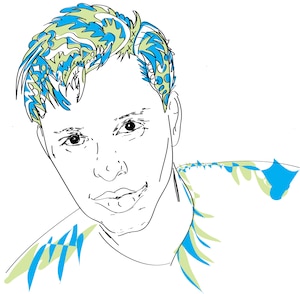
Drippin
Erik Spanne AKA Drippin is a young beatmaker with a flair for unique and compelling takes on club music of all types – eerie, erogenous and evocative. Based in Bergen, Norway, he produces duly icy rhythms, specialising in spacious and spine-chilling club thumpers. His debut release Silver Cloak, on New York's Lit City Trax, resulted in numerous festival appearances and dark-lit club sets all around Europe and the world, and he has laced his beats with NYC rapper Le1f, Chicago duo Sicko Mobb and London kingpin Riko Dan. Drippin is currently prepping his next solo release, forthcoming later this year.
[Back to the full list]
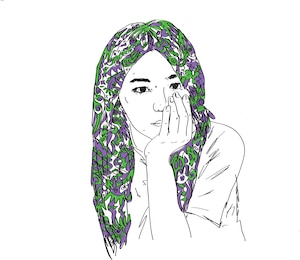
RayRay
Hsin-Lei Chao, better known as RayRay, works as a resident DJ at a couple of the biggest clubs in Taipei, Taiwan. Meanwhile she teams with friends in the studio to conjure trippy hip-hop and future bass bangers with a Technicolor touch. She’s competed in DJ tournaments in Asia and Canada, having won the Red Bull Thre3style national championship in Taiwan in 2013. She’s recorded with Skrillex, ghostwritten pop songs for Taiwan’s pop stars Kimberley Chen and JPM, and contributed a song to the soundtrack for the hit 2013 Chinese film Tiny Times 2. Chao grew up on hip-hop – indeed, in college she founded a club dedicated to it – and now she’s infusing her own grime- and trap-inspired dance productions with soulful grooves and jazzy harmonics, à la her heroes J Dilla and A Tribe Called Quest.
[Back to the full list]
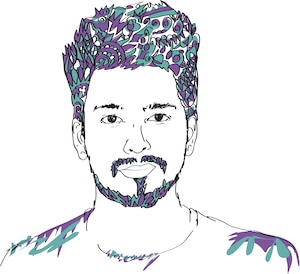
Oceantied
When he’s not playing guitar in the post-rock outfit Until We Last, Ketan Bahirat explores a wide range of electronic sounds in his solo Oceantied project. Inspired equally by Tycho and DJ Rashad, as well as a childhood heavy on Indian classical artists, Oceantied’s music moves from lush downtempo numbers to skittery footwork cuts. Often times both sides blur together, dreamy keyboard notes giving way to harsher moments. Bahirat absorbs and decodes many disparate genres of music to constantly morph his style, and he’s also keen on helping others achieve the same goal – in his home of Bangalore, he started an event called “Producer Circle,” where local creators come together to listen to each others' creations, discuss them and then collaborate.
[Back to the full list]
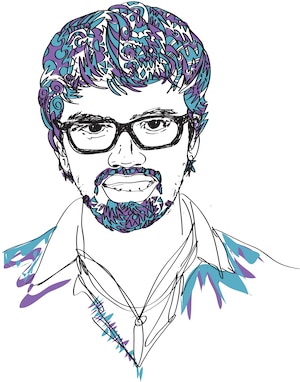
The Sine Painter
When Bangalore producer Jayanth Ramachandra first applied for the Academy, his music was as peaceful and immersive as a flotation tank, with dreamy deep house reflecting the influence of producers like Levon Vincent and German mainstay Roman Flügel. Since then, Jayanth, who used to play metal guitar during college, has moved excitedly towards grime-inspired, experimentally-inclined club music, showcasing a flexibility that highlights his comfort playing at both darker bass music and house nights. In both cases, his music is futuristic yet pleasingly familiar - he's described it as like "a cyborg trying to make emotional dance music," and we couldn't agree more.
[Back to the full list]
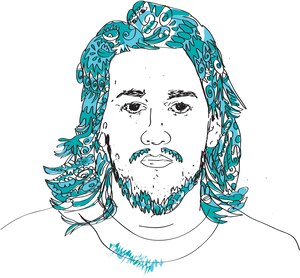
Niels Broos
Niels Broos started playing keys at the tender age of four, but a chance encounter with Miles Davis’ Kind of Blue at the age of six helped him discover “that music was much deeper than he expected.” Nowadays, the wild-haired piano maestro – who comes from a star-shaped town in the southern Netherlands – prefers to keep all his music in one folder labeled “Good,” but he does express a fondness for that sweet spot between Coltrane, D’Angelo, Dilla and FlyLo, with some Radiohead and Robert Johnson thrown in for good measure. When he’s not backing Dutch composer Kyteman’s genre-busting Kyteman Orchestra or Brainfeeder’s Jameszoo (a fellow RBMA alum), Broos is experimenting with his own brand of electronic jazz: soulful, yes, but embracing the lighthearted and the leftfield, too.
[Back to the full list]

Sofie Winterson
Sometimes indie and pop aren't just a label affiliation or a place on the charts: they are states of mind. Sofie Winterson’s electronic techniques and post-genre affections have made that clear. From her debut LP Wires through later works like 2016’s single “Kids,” her music is a smart synthesis of well-known influences and ideas lurking fathoms under the mainstream’s surface. As a singer-songwriter, she builds around the strength of her voice. It’s often disguised as fragility or vulnerability, but it also drives home the pulse of a beat as sure as any dance pop star.
[Back to the full list]

Sign Libra
The natural world and the creatures inhabiting it have played a major role in shaping the music Agata Melnikova creates under the name Sign Libra. Attending the Latvian Academy of Music and earning a degree in musicology while going on to work as a DJ, the Latvian artist has in recent years started creating original music that leans towards new age and ambient sounds. In 2015, she created the Closer To The Equator EP from her bedroom, for a one-act contemporary ballet performance (inspired by BBC Earth documentaries) at the Latvian National Opera in Riga. (Melnikova wrapped samples of animals in warm synthesizer tones and her voice.) She’s also taken this approach beyond the rainforest, covering R. Kelly’s “I Believe I Can Fly.”
[Back to the full list]
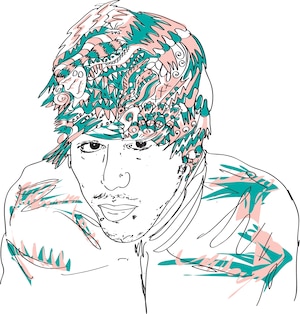
Ghost Wavvves
André Francisco started his Ghost Wavvves project in 2013 and has since released a slew of sugary beats, mostly through the stylistically malleable Portuguese collective Monster Jinx. It’s a fitting home for someone who began his career as a rapper, and went onto produce stuttering boom-bap from an 8-bit palette. Taking cues from Flying Lotus and Neon Genesis Evangelion, this self-taught producer manages to transmit the breakneck energy of video games with the contemplative concentration that can only come from living in front of a screen, controller in hand.
[Back to the full list]

UhAhUh
Lisbon-based multi-instrumentalist Guilherme Tomé Ribeiro is a man of many faces. As part of Salto, he’s been releasing cosmic space rock since 2010. Initially formed with his cousin Luis Montenegro, the group’s eponymous debut was released in 2012, and its follow-up Passeio Das Virtudes in 2016. Salto has been a hit on the festival circuit, from Optimus Alive to Rock In Rio Lisbon, but Ribeiro also has a couple of alter egos on the side. As GPU Panic, he explores his electronic side, drawing on techno to produce digital ballads such as “Tanger” and percussive experiments like “Lost My Wallet.” Meanwhile, as UhAhUh he serves up bite-size pieces of psychedelia. The Porto Music Conservatory alumnus finds it hard to pin his music down, given how much he morphs between styles – and this restlessness is exactly what makes it so distinct.
[Back to the full list]
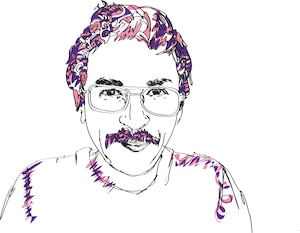
Julián Mayorga
When he was 12 years old, Colombian singer-songwriter Julian Mayorga was presented with handwritten instructions on how to play the guitar intro to a Charly García song. He didn't know how to play the instrument, nor did he even own one, but he carried the piece of paper around with him for months, attempting it each time he came across a guitar. Mayorga has since grown by leaps and bounds, having opened for Lætitia Sadier in 2012 and releasing his album Atlas in 2014, for which he designed his own synthesizers. Mayorga earned his Masters degree in electroacoustic and algorithmic composition in Madrid, and has been releasing music under his present moniker since 2010.
[Back to the full list]
